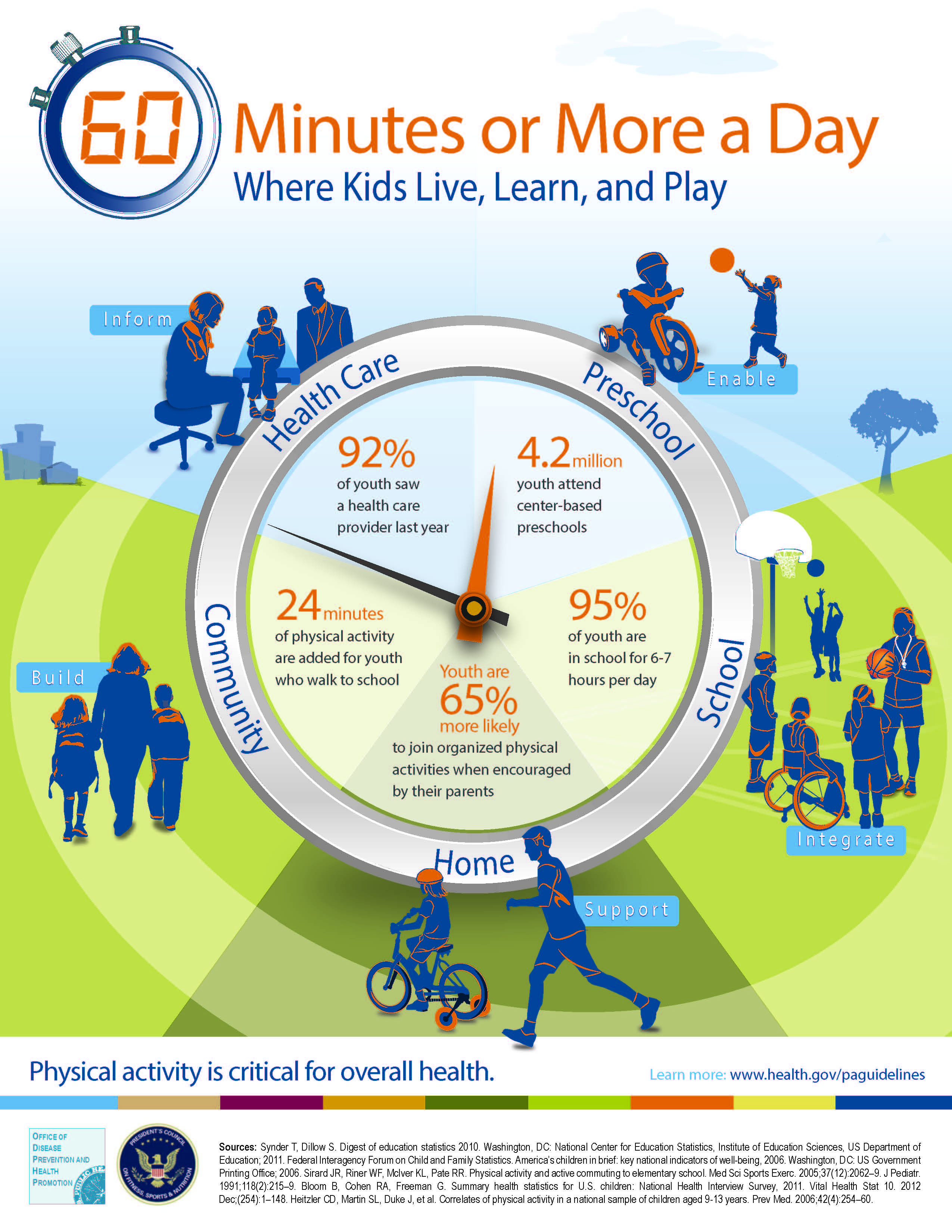Cross-posted from the President’s Council of Fitness, Sports and Nutrition blog.
By: Karin Allor Pfeiffer, PhD, FACSM, Associate Professor in the Department of Kinesiology and faculty in the Center for Physical Activity and Health at Michigan State University, Member of the PCFSN Science Board, and Subcommittee Member of the Physical Activity Guidelines Midcourse Report
In 2008, the U.S. Department of Health and Human Services (HHS) released the first-ever Physical Activity Guidelines (PAG), which describes the amount and types of physical activity Americans need for overall health and well-being.
To mark the fifth anniversary of the PAG, the President’s Council on Fitness, Sports and Nutrition (PCFSN) convened a subcommittee of experts to conduct a midterm review of effective interventions that promote physical activity opportunities for youth ages 3-17.
After reviewing the relevant science, the subcommittee developed a report – Physical Activity Guidelines Midcourse Report: Strategies to Increase Physical Activity Among Youth – that focused on five key settings that provide opportunities for youth to be active for 60 minutes or more a day where they live, learn, and play.

School: Make quality physical activity a part of the school day in a variety of ways. Overall, findings supported school-based interventions as having the most evidence to increase physical activity among youth. With the average school day lasting 6-7 hours, it is not surprising that enhanced PE classes, classroom activity breaks, recess, and before and after school activities have played a large role in advancing childhood health. Active transporation, which includes walking or biking to and from school, also provides a great opportunity for kids to get their daily physical activity.
Preschool and Childcare: Start healthy habits for life with active play in preschool. Preschool and childcare centers showed excellent results in starting healthy habits for youth. Increasing time children spend outside and providing portable play equipment on playgrounds were especially effective. The findings also demonstrated that training staff in the delivery of structured physical activity sessions is a productive way to get youth active at an early age.
Community: Build the physical environments of cities, towns and neighborhoods to encourage physical activity. Community settings were found to be promising in impacting physical activity at the population level. Changes to the built environment, such as altering the mix of residential and retail space to be more walker-friendly can encourage more physical activity and shape the sociocultural environment of a community.
Family and Home: Be physically active with your kids and help them develop active lifestyles at a young age. Research shows that children develop physical activity behaviors, attitudes and values in the home, but there is not yet enough evidence to make firm recommendations in this area.
Primary Care: Physical activity is critical for overall health. Talk to your patients about the importance of being active every day. Health care providers remain critical to monitoring children’s health, but more research should be conducted to determine specific recommendations on enhancing physical activity.
Parents and caregivers, childcare providers, teachers, healthcare professionaks and policymakers have an opportunity to work together to ensure that children are able to achieve 60 minutes or more of physical activity each day. By providing support at home, integrating physical activity into the school day and building smarter communities, we can enable youth to adopt healthier, more active lifestyles.
To download the Physical Activity Guidelines Midcourse Report: Strategies to Increase Physical Activity Among Youth and infographic, visit odphp.health.gov/paguidelines.